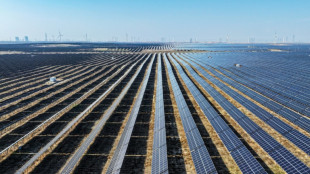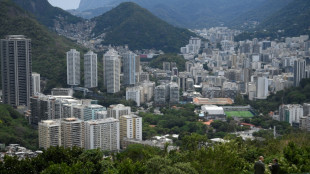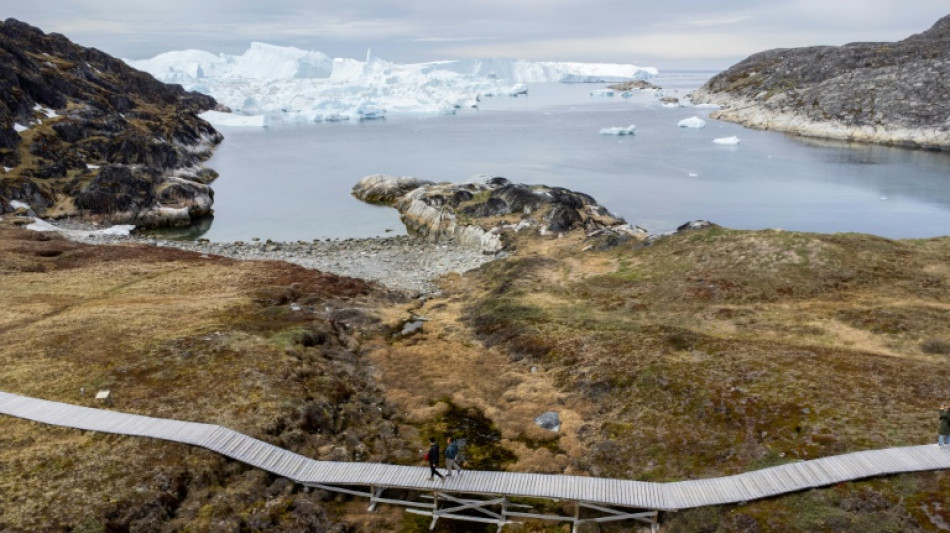
-
 Liverpool down Real Madrid in Champions League, Bayern edge PSG
Liverpool down Real Madrid in Champions League, Bayern edge PSG
-
Van Dijk tells Liverpool to keep calm and follow Arsenal's lead

-
 PSG left to sweat on injuries to Dembele and Hakimi
PSG left to sweat on injuries to Dembele and Hakimi
-
Reddit, Kick to be included in Australia's social media ban

-
 Ex-Zimbabwe cricket captain Williams treated for 'drug addiction'
Ex-Zimbabwe cricket captain Williams treated for 'drug addiction'
-
Padres ace Darvish to miss 2026 MLB season after surgery

-
 Diaz hero and villain as Bayern beat PSG in Champions League showdown
Diaz hero and villain as Bayern beat PSG in Champions League showdown
-
Liverpool master Real Madrid on Alexander-Arnold's return

-
 Van de Ven back in favour as stunning strike fuels Spurs rout
Van de Ven back in favour as stunning strike fuels Spurs rout
-
Juve held by Sporting Lisbon in stalling Champions League campaign

-
 New lawsuit alleges Spotify allows streaming fraud
New lawsuit alleges Spotify allows streaming fraud
-
Stocks mostly drop as tech rally fades

-
 LIV Golf switching to 72-hole format in 2026: official
LIV Golf switching to 72-hole format in 2026: official
-
Manchester City have become 'more beatable', says Dortmund's Gross

-
 Merino brace sends Arsenal past Slavia in Champions League
Merino brace sends Arsenal past Slavia in Champions League
-
Djokovic makes winning return in Athens

-
 Napoli and Eintracht Frankfurt in Champions League stalemate
Napoli and Eintracht Frankfurt in Champions League stalemate
-
Arsenal's Dowman becomes youngest-ever Champions League player

-
 Cheney shaped US like no other VP. Until he didn't.
Cheney shaped US like no other VP. Until he didn't.
-
Pakistan edge South Africa in tense ODI finish in Faisalabad

-
 Brazil's Lula urges less talk, more action at COP30 climate meet
Brazil's Lula urges less talk, more action at COP30 climate meet
-
Barca's Lewandowski says his season starting now after injury struggles

-
 Burn urges Newcastle to show their ugly side in Bilbao clash
Burn urges Newcastle to show their ugly side in Bilbao clash
-
French pair released after 3-year Iran jail ordeal

-
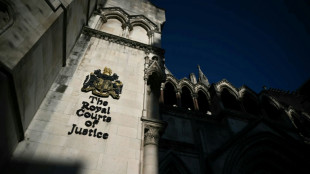 Getty Images largely loses lawsuit against UK AI firm
Getty Images largely loses lawsuit against UK AI firm
-
Cement maker Lafarge on trial in France over jihadist funding
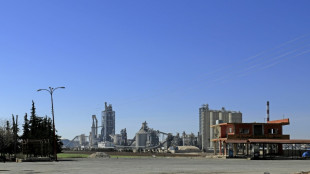
-
 Sculpture of Trump strapped to a cross displayed in Switzerland
Sculpture of Trump strapped to a cross displayed in Switzerland
-
Pakistan's Rauf and Indian skipper Yadav punished over Asia Cup behaviour

-
 Libbok welcomes 'healthy' Springboks fly-half competition
Libbok welcomes 'healthy' Springboks fly-half competition
-
Reeling from earthquakes, Afghans fear coming winter

-
 Ronaldo reveals emotional retirement will come 'soon'
Ronaldo reveals emotional retirement will come 'soon'
-
Munich's surfers stunned after famed river wave vanishes
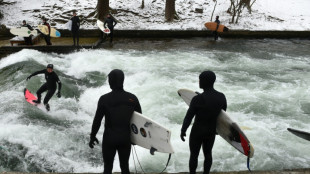
-
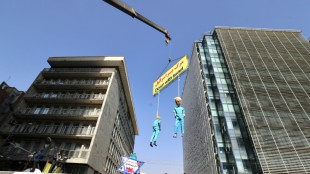 Iran commemorates storming of US embassy with missile replicas, fake coffins
Iran commemorates storming of US embassy with missile replicas, fake coffins
-
Gauff sweeps Paolini aside to revitalise WTA Finals defence

-
 Shein vows to cooperate with France in probe over childlike sex dolls
Shein vows to cooperate with France in probe over childlike sex dolls
-
Young leftist Mamdani on track to win NY vote, shaking up US politics

-
 US government shutdown ties record for longest in history
US government shutdown ties record for longest in history
-
King Tut's collection displayed for first time at Egypt's grand museum

-
 Typhoon flooding kills over 40, strands thousands in central Philippines
Typhoon flooding kills over 40, strands thousands in central Philippines
-
Trent mural defaced ahead of Liverpool return

-
 Sabalenka to face Kyrgios in 'Battle of Sexes' on December 28
Sabalenka to face Kyrgios in 'Battle of Sexes' on December 28
-
Experts call for global panel to tackle 'inequality crisis'

-
 Backed by Brussels, Zelensky urges Orban to drop veto on EU bid
Backed by Brussels, Zelensky urges Orban to drop veto on EU bid
-
After ECHR ruling, Turkey opposition urges pro-Kurd leader's release

-
 UK far-right activist Robinson cleared of terror offence over phone access
UK far-right activist Robinson cleared of terror offence over phone access
-
World on track to dangerous warming as emissions hit record high: UN
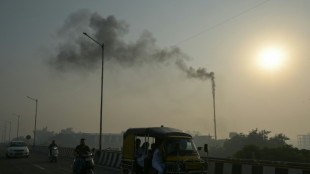
-
 Nvidia, Deutsche Telekom unveil 1-bn-euro AI industrial hub
Nvidia, Deutsche Telekom unveil 1-bn-euro AI industrial hub
-
Which record? Haaland warns he can get even better

-
 Football star David Beckham hails knighthood as 'proudest moment'
Football star David Beckham hails knighthood as 'proudest moment'
-
Laurent Mauvignier wins France's top literary award for family saga


Greenland melted recently, says study that raises future sea level threat
A mile-thick ice sheet in Greenland vanished around 416,000 years ago during a period of moderate natural warming, driving global sea rise to levels that would spell catastrophe for coastal regions today, a study said Thursday.
The results overturn a long-held view that the world's largest island was an impregnable fortress of ice over the past 2.5 million years, and instead show it will be far more vulnerable to human-caused climate change than previously thought.
"If we want to understand the future, we need to understand the past," University of Vermont scientist Paul Bierman, who co-led the paper published in Science, told AFP.
The research relied on an ice core extracted 4,560 feet (1,390 meters) under the surface of Northwest Greenland by scientists at Camp Century, a secretive US military base that operated in the 1960s.
This 12-foot long tube of soil and rock was lost in a freezer only to be rediscovered in 2017.
Scientists were stunned to learn it contained not just sediment but leaves and moss -- irrefutable evidence of an ice-free landscape, perhaps covered by an ancient forest that woolly mammoths would have roamed.
- A green Greenland -
Though researchers were deprived for decades of access to the precious sample, Bierman said in some ways it was "providential," as the cutting-edge techniques used to date the core are very recent.
Key among these is "luminescence dating," which allowed scientists to determine the last time that sediment buried beneath the Earth's surface was exposed to light.
"As sediment is buried beneath the surface, background radiation from soil fills in the little holes or imperfections in minerals like quartz or feldspar, and builds up what we call a luminescence signal over time," co-author Drew Christ told AFP.
In a dark room, scientists took interior strips of the ice core and exposed them to blue-green or infrared light, releasing trapped electrons that form a kind of ancient clock that shows the last time they were exposed to sunlight, which erases the luminescence signal.
"And the only way to do that at Camp Century is to remove a mile of ice," said Tammy Rittenour, a co-author of the study at Utah State University. "Plus, to have plants, you have to have light."
Luminescence dating provided the end point of the ice-free period, with the start point coming from another technique.
Inside the quartz from the Camp Century core, rare forms -- called isotopes -- of the elements beryllium and aluminum build up when the ground is exposed to the sky and cosmic rays.
Looking at the ratio of the normal forms of these elements to the rare isotopes, the scientists could derive a window for how long the rocks were at the surface versus how long they were buried.
They found the sediment was exposed for less than 14,000 years, meaning this was how long the area was ice-free.
- Coastal cities imperiled -
The Camp Century core was taken only 800 miles from the North Pole, with the study showing the entire region would have been covered in vegetation.
This took place in a time of natural warming called an interglacial period, when temperatures were similar to today, around 1.8-2.7 degrees Fahrenheit (1-1.5C) warmer than the pre-industrial era.
The team's modeling showed that the ice sheet melting would have caused between five and twenty feet of sea level rise at that time.
This suggests that every coastal region of the world, home to many global population centers, are at risk of submersion in the coming centuries.
Joseph MacGregor, a climate scientist at NASA who was not involved in the study, noted that the interglacial period that warmed Greenland during this period lasted tens of thousands of years, much longer than what humans have induced so far.
But even so, "we've far surpassed the magnitude of the greenhouse gas forcing back then," he said.
Atmospheric levels of heat-trapping carbon dioxide are currently 420 parts per million (ppm) against 280 ppm during Greenland's ice-free period, and this will remain in the skies for thousands of years.
"We're doing a giant experiment on Earth's atmosphere, and we don't know the results of that experiment," said Bierman. "I don't take that as 'Oh my god the sky is falling,' I take that as we've got to get it together."
K.Thomson--BTB

